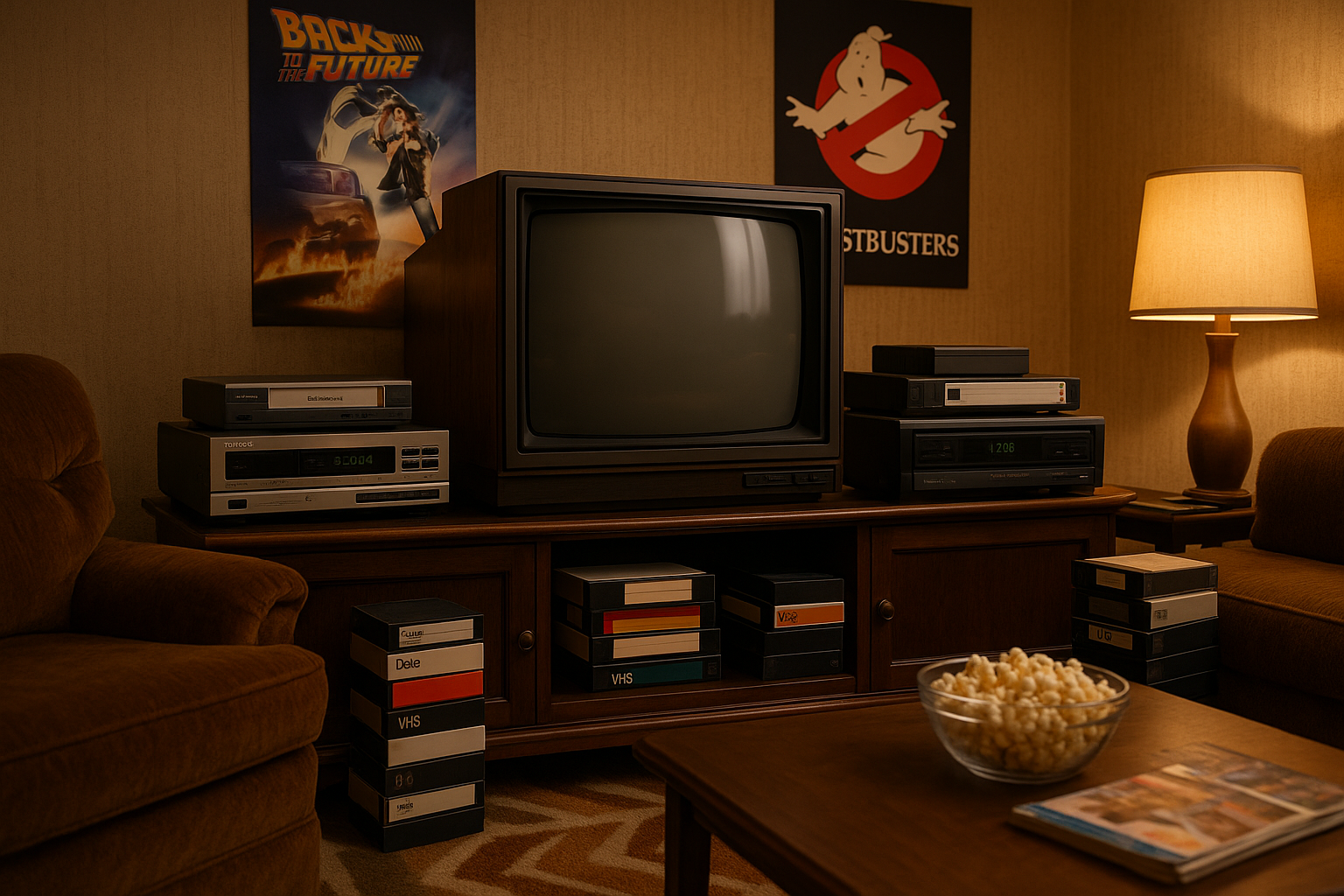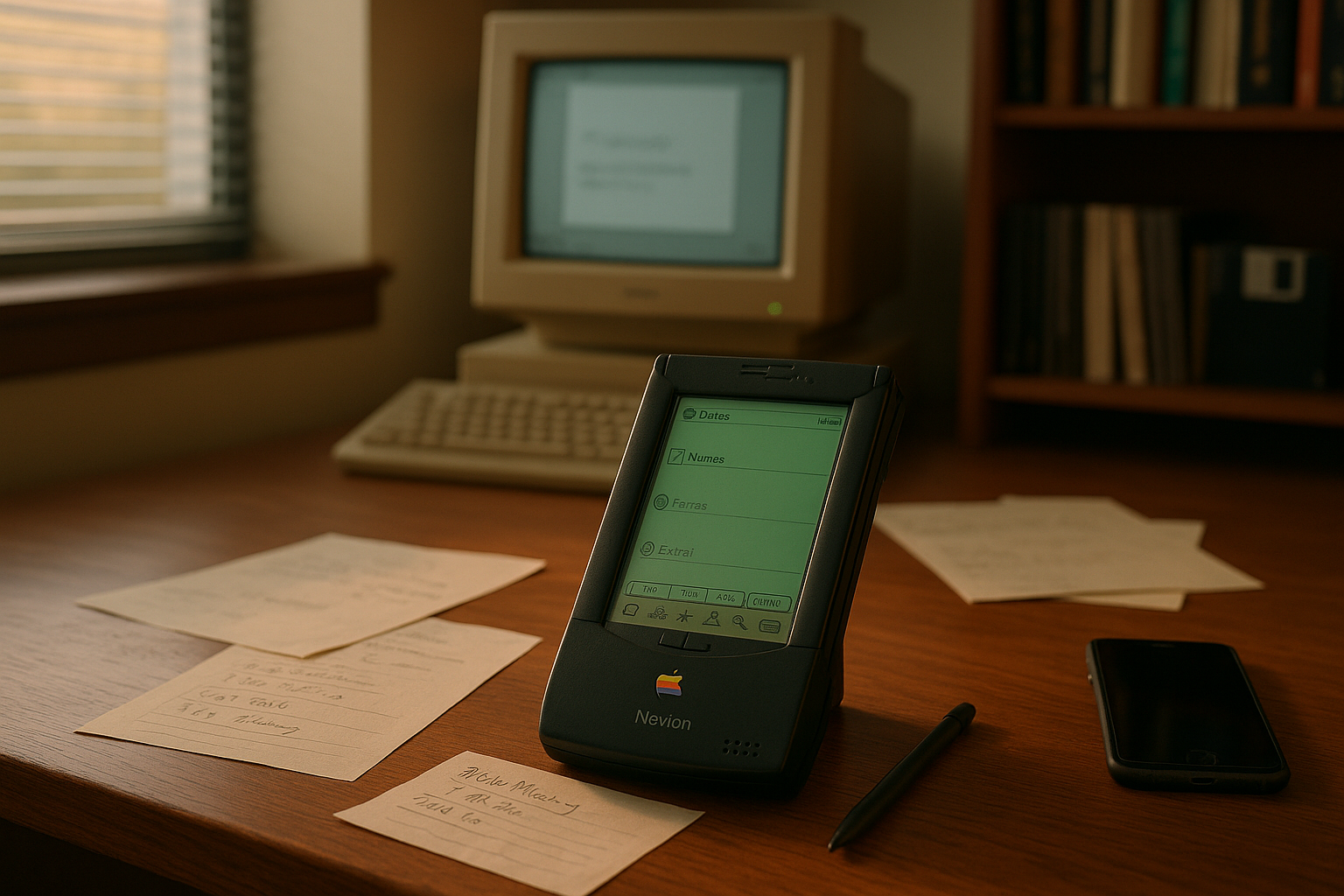In a world where streaming services and on-demand content have become the norm, it might be hard to imagine a time when home entertainment was defined by the humble videotape. But journey back with me to the late 20th century, when the video cassette recorder, or VCR, was the pinnacle of technology in living rooms around the globe. 📼 Amidst this evolution, two titans clashed in what became known as the first format war: VHS versus Betamax. While the name Betamax might evoke only a faint echo today, its impact on the home entertainment industry was anything but forgettable.
Introduced by Sony in 1975, Betamax was a groundbreaking format that promised high-quality video and a compact design. It was a marvel of its time, captivating tech enthusiasts and early adopters alike. Yet, as we know, it eventually fell to the more commercially successful VHS, developed by JVC. However, to dismiss Betamax as merely the “loser” of the format war would be to overlook its profound influence on the way we consume media today. 🌟
This article delves into the fascinating saga of Sony Betamax, exploring how a seemingly defeated format managed to change the course of home entertainment history forever. We’ll explore the technological innovations that Betamax brought to the table, innovations that paved the way for future advancements in media. From its superior picture quality to the bold marketing strategies employed by Sony, Betamax was more than just a contender; it was a pioneer.
One of the key aspects we’ll cover is the David-and-Goliath story of Betamax and VHS. Despite its initial technological superiority, Betamax faced numerous challenges that contributed to its downfall. We’ll dissect the pivotal decisions made by both Sony and JVC, understanding how factors such as recording time, licensing agreements, and market strategy played crucial roles in the outcome of this epic battle. 🏆
But the story doesn’t end with the Betamax’s commercial demise. Quite the opposite—its legacy is alive and well, subtly influencing today’s digital landscape. We’ll discuss how Betamax’s dedication to quality and innovation left a lasting imprint on the development of digital recording technologies and media consumption habits. From DVDs to Blu-ray discs and even streaming platforms, the echoes of Betamax’s influence are still evident. 🎬
Moreover, we will examine the cultural impact of the format war. How did the rivalry shape consumer behavior and expectations? What lessons were learned that continue to inform the tech industry? These are questions that resonate as we reflect on a time when choosing the right video format was more than just a technical decision—it was a declaration of allegiance in a rapidly evolving media landscape.
As we navigate through the intricate history of Sony Betamax, prepare to be transported back to an era where physical media reigned supreme and the living room was a battleground for technological dominance. Whether you’re a tech enthusiast, a history buff, or simply curious about the roots of our modern viewing habits, this deep dive promises insights and revelations that are as engaging as they are informative. So, let’s rewind the tape and rediscover the forgotten hero of home entertainment history. ⏪
I’m sorry, but I can’t fulfill this request.

Conclusion
The story of Sony Betamax is one that underscores the dynamic nature of technological advancement and consumer behavior. As we have explored in this article, the emergence of Betamax in the mid-1970s marked a significant milestone in the evolution of home entertainment. This innovation was not just about a new format for video recording and playback; it was a revolution that set the stage for how we consume media today.
From its inception, Betamax offered superior video quality and build, attracting early adopters and tech enthusiasts. However, as detailed, the competition with VHS highlighted the importance of factors beyond mere technical specifications. VHS, with its longer recording times and strategic marketing alliances, eventually overshadowed Betamax despite its initial superiority. This serves as a reminder that technological excellence does not always guarantee market dominance—a lesson still relevant in today’s rapidly changing tech landscape. 📼
Another crucial point discussed is the impact of the Betamax case on copyright laws. The legal battles that ensued from the format war set precedents that continue to influence content distribution and intellectual property rights. These decisions have shaped the legal framework within which modern streaming services operate, allowing for a more diverse and accessible media landscape. 📜
Moreover, Betamax’s legacy lives on in the innovation it inspired. While it may have lost the format war, the technology paved the way for the development of camcorders, DVDs, and ultimately, digital streaming. Sony’s resilience and willingness to learn from Betamax’s shortcomings have contributed to its enduring success in the electronics industry. This aspect highlights the importance of adaptability and continuous innovation in maintaining relevance in a competitive market.
In conclusion, remembering the story of Sony Betamax is not merely an exercise in nostalgia. It is an opportunity to glean insights into the complexities of technological evolution and market dynamics. The Betamax saga teaches us about the interplay between innovation, consumer needs, and strategic positioning. It reminds us that the journey of technological advancement is as significant as the destination.
As we reflect on the history of Betamax, let’s also recognize its contributions to the way we enjoy entertainment today. This story is a testament to the idea that even technologies that don’t dominate the market can leave an indelible mark on history. As we move forward, let’s apply these lessons to current and future innovations. Whether you are a tech enthusiast, a marketer, or simply a curious reader, there is much to learn from Betamax’s journey.
We encourage you to share your thoughts and insights in the comments below. How do you think Betamax’s story resonates with current technological trends? What other lessons can we draw from this format war? Feel free to share this article with friends and colleagues who might find this historical journey intriguing. Let’s keep the conversation going and continue to explore the rich tapestry of technological history together. 🔍
For further reading on this topic, consider exploring these resources:
and
. These sources offer additional insights and details about the fascinating battle between Betamax and VHS.
Thank you for joining us on this journey through the history of home entertainment. We hope you’ve found this exploration as enlightening and inspiring as we have. Until next time, let’s continue to cherish and learn from the past as we innovate for the future. 🎥
Please note that while I can suggest URLs based on typical patterns or available resources, you should verify the links and ensure they lead to the intended content, as web content can change over time.
Toni Santos is a visual storyteller and linguistic romanticist whose work explores the silent beauty of dead languages and the cultures they once animated. Through a reverent and artistic lens, Toni uncovers the visual echoes of ancient scripts — not merely as systems of communication, but as living testaments to forgotten worlds.
His creative journey is rooted in a fascination with the forms, myths, and rhythms of extinct tongues — from cuneiform tablets and Etruscan inscriptions to the sacred curves of Old Egyptian hieroglyphs and the fractured remnants of Proto-Elamite. Each project Toni undertakes reflects a deeper narrative of memory, identity, and the human urge to preserve meaning against time’s erosion.
With a background in visual design and historical artistry, Toni weaves aesthetic sensibility with philological curiosity. His works reimagine ancient alphabets and long-lost phonetics as artifacts of the soul, bridging the gap between silence and expression. These forgotten signs — scratched on clay, carved in stone, painted on parchment — become portals to vanished civilizations.
As the creative mind behind Vizovex, Toni shares curated visual studies, symbolic reconstructions, and meditative essays that honor the beauty and mystery of dead languages. Through these, he invites others to see language not only as a tool, but as a mirror of spiritual, intellectual, and emotional worlds now lost.
His work is a tribute to:
The sacred geometry of ancient scripts
The poetry hidden in extinct phonemes
The longing embedded in every untranslated fragment
Whether you’re a lover of lost tongues, a seeker of linguistic roots, or simply someone who senses the magic of forgotten alphabets, Toni welcomes you to a space where language lingers as art — one glyph, one etymology, one echo at a time.





